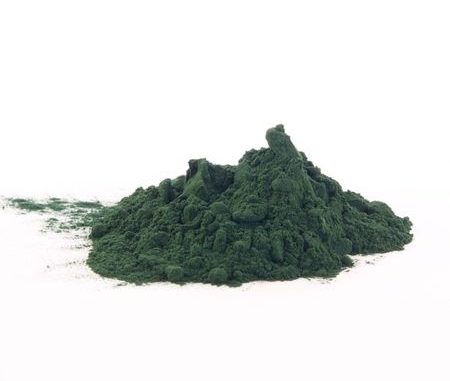
- Spirulina exclusively produces a natural blue colour for use in foods and beverages
The song ‘Blue is the colour’ which Chelsea FC released back in the 70’s so triumphantly might not be applicable to the blue colour just yet which is available from the algae Spirulina. It’s the food colour found in blue Smarties from Nestle. It also has wide application in the pharmaceutical and OTC medicines industry as a colourant. The name incidentally is phycocyanin and we see it having a number of health benefits in its own right.
Spirulina And Regulatory Considerations
Whilst Spirulina is now promoted as a health food (Venkataraman and Becker, 1985) the safety of the pigment has come under regulatory scrutiny. Is it a colouring for food and thus a legal food ingredient or is it an additive which requires pre-approval ? It’s a question exercising the Food Standards Agency (FSA) as they examine a number of substances to establish their regulatory status. Autumn 2014 was the deadline for the report prior to a meeting of the Commission’s working group on food additives who asked the FSA to conduct the investigation. The impact of the decision about Spirulina’s blue colour will be whether it requires an E number or not for example. Colouring foodstuffs are food ingredients and don’t have the E number whereas natural colours are classed as additives because they are sourced and extracted from natural materials. One to watch as the ruling would apply to other types of ingredients.
Spirulina And Its Role In Product Development
Spirulina platensis is a blue-green algae found in tropical or sub-tropical lakes and provides a rare natural blue colour. The ingredient has found a number of applications in sweets, candies, gums and other confectionary in particular. The US Food & Drug Administration has already approved Spirulina colour for use in confectionary and chewing gums, and complies with US federal regulations.
The colour from Spirulina is usually extracted as an aqueous solution to provide clear solutions for beverages. The componentry making up the blue colour is phycocyanin which is a pigment-protein complex in the phycobiliprotein family involved in light generated energy production. The phycobiliprotein family includes allophycocyanin and phycoerythrin.
The major pigments were initially characterised following successful extraction in 1979 (Boussiba and Richmond, 1979) before settling on a carefully optimised process (Silveira et al., 2007). The extraction of the colour pigments have also been examined recently using solid-liquid extraction and forms the basis of a useful process for scale-up (Su et al., 2014). Extraction which appears to be a limiting factor in its purification might be significantly improved by microwave treatment as part of the process and which has been applied to other natural components (Krishnan and Rajan, 2016).
The phycocyanin pigments are not very heat stable and further research is needed to improve this aspect if it is to find acceptance in baked goods or with high heat processing technologies. Sorbitol can improve colour stability but its presence indicates that the protein portion of the pigment is the most unstable part (Antelo et al., 2008).
Chr. Hansen is one supplier offering Spirulina colour as part of the SweetColor™ range for confectionary as is Food Ingredient Solutions (FIS, USA) with their Spirulina Blue. Fenchem launched Spirulina blue as part of the FenColor™ range in 2014 following approval by the FDA in the USA.
FoodWrite Ltd recently produced an internal report on the feasibility of producing spirulina colour, especially larger-scale production which is available on request.
References
Antelo, F.S., Costa, J.A.V., Kalil, S.J. (2008) Thermal degradation kinetics of the phycocyanin from Spirulina platensis. Biochem. Eng. J. 41(1) pp. 43-47 doi:10.1016/j.bej.2008.03.012
Krishnan, R.Y., Rajan, K.S. (2016) Microwave assisted extraction of flavonoids from Terminalia bellerica: Study of kinetics and thermodynamics. Sep. Purific. Technol. 157 pp. 169-178 doi:10.1016/j.seppur.2015.11.035
Su, C.-H., Liu, C.-S., Yang, P.-C., Su, K.-S., Chiuh, C.-C. (2014) Solid–liquid extraction of phycocyanin from Spirulina platensis: Kinetic modeling of influential factors. Sep. Purific. Technol. 123 pp. 64-68 doi:10.1016/j.seppur.2013.12.026
Venkataraman, L.V., Becker, E.W. (1985) Algal cultivation. In: Venkataraman LV, Becker EW, editors. Biotechnology and utilization of algae. The Indian experience, pp. 12–32.
Revised 7th January 2016.
Hi, Thank you for a very interesting article. Will it be possible to receive the internal report you mentioned? I am researching phycocyanin production in Israel. Thank you
An interesting idea – never thought that an alga could actually be useful as a blue colour. If you think about it I would say non-toxic algae would work if it was coloured.